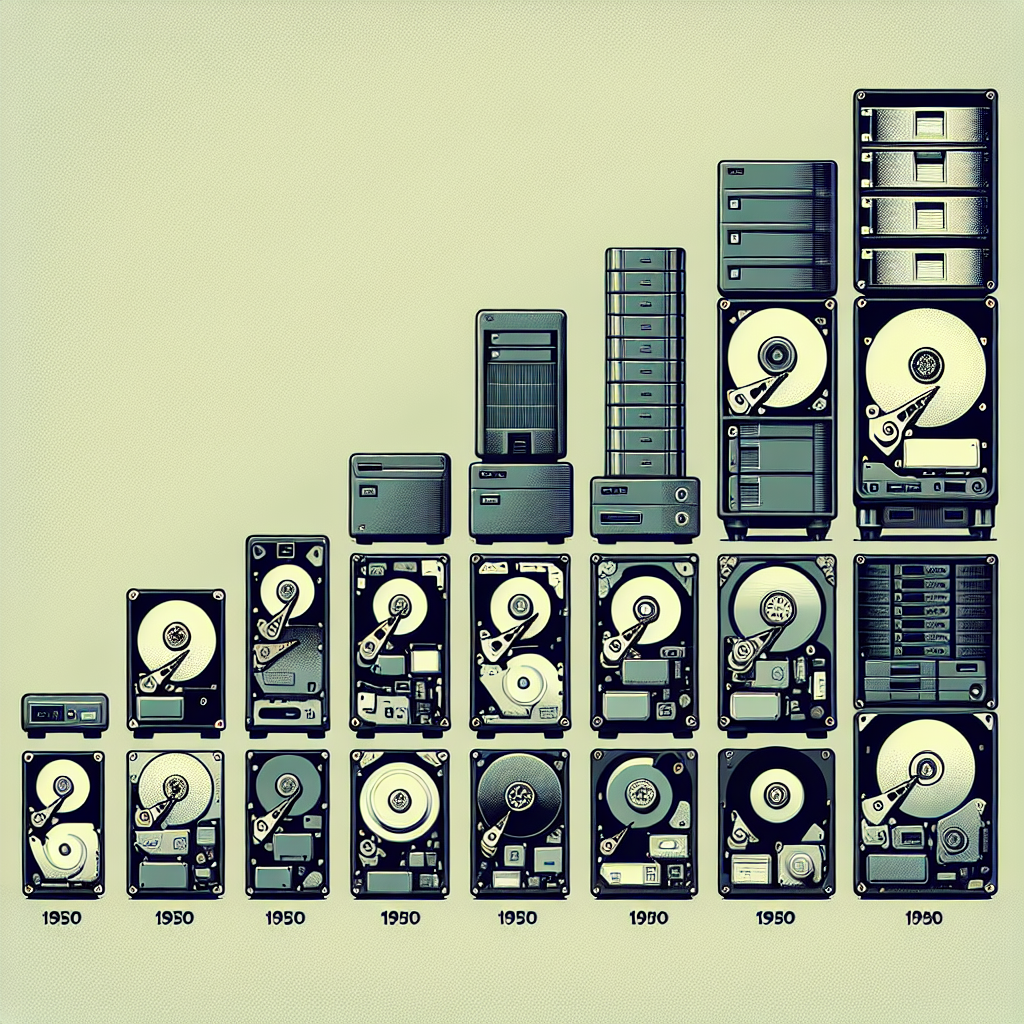Your cart is currently empty!
The Evolution of Hard Disk Drives: A Brief History

Hard disk drives (HDDs) have come a long way since their inception in the 1950s. These devices, which are used to store and retrieve digital data, have evolved significantly over the years, becoming faster, more reliable, and capable of storing larger amounts of data than ever before. In this article, we will take a brief look at the history of HDDs and how they have changed over time.
The first hard disk drive was introduced by IBM in 1956. Known as the IBM 305 RAMAC, this early HDD was massive in size, weighing over a ton and consisting of fifty 24-inch platters. Despite its size, the IBM 305 RAMAC could only store a mere 5 megabytes of data. In comparison, today’s HDDs can store terabytes of data in a much smaller form factor.
Throughout the 1960s and 1970s, HDD technology continued to evolve, with improvements in storage capacity and speed. By the 1980s, HDDs had become more compact and affordable, making them accessible to a wider range of consumers. This led to the widespread adoption of HDDs in personal computers, where they quickly became the standard for data storage.
In the 1990s, the introduction of new technologies such as the IDE interface and the introduction of the first consumer-grade solid-state drives (SSDs) began to challenge the dominance of HDDs. However, HDD manufacturers responded by increasing storage capacities and improving performance, ensuring that HDDs remained a viable option for consumers.
In the early 2000s, the introduction of perpendicular recording technology allowed HDD manufacturers to further increase storage capacities, with some drives now capable of storing multiple terabytes of data. This technology, along with advancements in read/write speeds and data transfer rates, has helped to keep HDDs competitive in the face of increasing competition from SSDs.
Today, HDDs continue to be a popular choice for consumers and businesses alike, offering a cost-effective solution for storing large amounts of data. While SSDs may offer faster performance, HDDs remain the go-to option for bulk storage due to their lower cost per gigabyte.
Looking to the future, HDD manufacturers are continuing to innovate, with new technologies such as shingled magnetic recording (SMR) and heat-assisted magnetic recording (HAMR) promising even greater storage capacities and performance. As technology continues to advance, it is clear that the evolution of hard disk drives is far from over, and we can expect to see even more impressive advancements in the years to come.

Leave a Reply